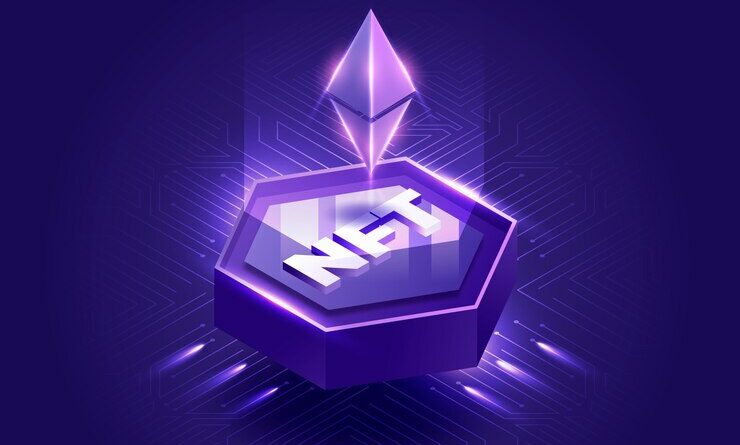7 Key Tips to Understanding SKL Crypto
The world of cryptocurrencies is expanding rapidly, offering a wealth of opportunities for both investors and enthusiasts. One such cryptocurrency that has been gaining attention is SKL Crypto, the native token of the SKALE Network. SKALE is a blockchain platform designed to help developers build decentralized applications (dApps) more efficiently, providing scalable, secure, and high-performance solutions. This article will explore 7 key tips to understanding SKL Crypto and how it could be a valuable addition to the ever-evolving crypto ecosystem.
1. What Is SKL Crypto?
Before diving into tips on understanding SKL Crypto, it’s essential to understand what it is. SKL Crypto is the native cryptocurrency of the SKALE Network, which aims to solve one of the most significant problems in blockchain technology—scalability. The SKALE Network is built to provide developers with the infrastructure to deploy high-speed, low-cost, and secure dApps.
Unlike traditional blockchains like Bitcoin and Ethereum, which often struggle with scalability issues, the SKALE Network allows developers to create custom blockchains called “Elastic Blockchains.” These chains can be tailored to meet specific needs, and since they are connected to a larger ecosystem, they can leverage the SKALE Network’s scalability.
SKL Crypto plays a crucial role in the SKALE ecosystem, serving as both a utility token and a governance token. It facilitates transaction fees, staking, and network participation. Users can stake SKL tokens to secure the network and earn rewards, and it also plays a role in decentralized governance, where token holders vote on key decisions regarding the protocol’s development.
2. SKALE Network’s Purpose and Vision
Understanding SKL Crypto requires understanding the purpose and vision of the SKALE Network itself. SKALE Network is designed to provide an Ethereum-compatible platform that offers scalability without compromising security or decentralization. The main challenges for decentralized applications today are scalability and high transaction costs. Platforms like Ethereum, which are widely used for building decentralized applications, face severe congestion during periods of high demand, leading to slow transaction times and expensive gas fees.
SKALE addresses these challenges by offering the ability to create multiple parallel blockchains within its ecosystem. These blockchains are optimized for performance, allowing dApps to scale efficiently without facing the bottlenecks of more traditional blockchain networks. The SKALE Network is built with flexibility in mind, supporting a wide range of decentralized applications, including gaming, finance, supply chain, and more.
Key Features of SKALE:
- Elastic Chains: Customizable blockchains that can scale independently.
- Ethereum Compatibility: SKALE is designed to be fully compatible with Ethereum, making it easy for developers to transition from Ethereum to SKALE.
- Security: SKALE ensures robust security through its decentralized validator network, which helps maintain the integrity of the platform.
- High Throughput and Low Latency: SKALE can handle thousands of transactions per second (TPS), allowing dApps to run seamlessly without delays or congestion.
Understanding the vision behind SKALE and its scalability solutions is key to grasping the role of SKL Crypto in the broader blockchain ecosystem.
3. The Role of SKL Token in the Network
The SKL token plays multiple roles within the SKALE Network, and understanding these roles is critical to understanding SKL Crypto.
- Staking: SKL holders can stake their tokens to secure the SKALE network. Staking helps maintain the security and integrity of the network by incentivizing participants to act honestly. In return, stakers are rewarded with additional SKL tokens. Staking rewards are distributed to those who help validate transactions on the network.
- Transaction Fees: SKL is used to pay for transaction fees within the SKALE Network. Although SKALE’s structure reduces the cost of transactions significantly, the SKL token is still required for network operations, including paying for bandwidth and storage on the Elastic Chains.
- Governance: SKL token holders have the power to participate in the governance of the SKALE Network. They can vote on proposals related to protocol upgrades, security measures, and other network changes. This decentralized approach ensures that the future of the network is in the hands of its community.
- Ecosystem Incentives: SKL Crypto is also used to incentivize participants within the broader SKALE ecosystem, including developers, validators, and stakers. This creates a dynamic environment where stakeholders are rewarded for contributing to the network’s growth and development.
By understanding the various roles of the SKL token, you can see how its utility is woven into the fabric of the SKALE Network and why holding or staking SKL tokens can be a worthwhile investment for users involved in the ecosystem.
4. How SKALE Solves Blockchain Scalability Issues
A critical aspect of understanding SKL Crypto is understanding how the SKALE Network solves the pressing issue of blockchain scalability. As mentioned earlier, many blockchains, especially Ethereum, face limitations when it comes to transaction throughput. SKALE’s innovation lies in its ability to create multiple parallel chains that can work together to provide high scalability.
Elastic Chains
Elastic Chains are customizable blockchains within the SKALE Network. These chains can be tailored to a specific dApp’s needs, whether they require high throughput, high security, or specific configurations. These chains can be deployed in a way that optimizes performance, allowing for a high number of transactions to be processed simultaneously.
Consensus Mechanism
The SKALE Network uses a Byzantine Fault Tolerant (BFT) consensus mechanism, which ensures that the network can continue functioning correctly even if a portion of the validators are compromised. This consensus mechanism also helps SKALE achieve faster transaction times and higher throughput without sacrificing decentralization.
Scalability Without Compromise
Unlike other platforms that sacrifice decentralization or security to achieve scalability, SKALE offers a solution that balances all three aspects. The network can scale horizontally, meaning that as demand increases, more resources can be added to meet the demand without affecting the overall performance.
By providing a scalable solution that maintains decentralization and security, SKALE offers a robust platform for developers to build dApps without worrying about congestion or high transaction fees.
5. The Importance of Staking SKL Tokens
Staking is a central component of the SKALE Network, and understanding the staking process is essential for anyone interested in SKL Crypto. Staking involves locking up your SKL tokens to participate in securing the network and maintaining its integrity. By staking your tokens, you become part of the network’s validator set, which helps validate transactions and produce new blocks.
Benefits of Staking SKL
- Rewards: Stakers earn rewards in the form of additional SKL tokens. The rewards vary depending on the amount of SKL staked, the duration of the stake, and the overall health of the network.
- Security: Staking helps secure the network. Validators who fail to follow the protocol or act maliciously can lose their staked tokens as part of the penalty mechanism.
- Passive Income: Staking SKL provides an opportunity to earn passive income. For those who are holding SKL tokens, staking can be a way to earn a return on their investment while contributing to the network’s security.
To start staking SKL tokens, you need to choose a validator to delegate your tokens to, and the more SKL you stake, the higher your chances of being selected as a validator. Understanding the staking process is vital if you want to maximize your involvement with SKL Crypto.
6. Where to Buy and Store SKL Tokens
To buy SKL tokens, you’ll need to find a cryptocurrency exchange that supports them. SKL is typically available on major exchanges such as Binance, KuCoin, and Kraken. These exchanges provide the ability to buy SKL with other cryptocurrencies like Bitcoin or Ethereum or even with fiat currencies in some cases.
Purchasing SKL Tokens
- Exchanges: As mentioned earlier, SKL can be bought on various centralized exchanges. Some decentralized exchanges (DEXs) might also support SKL, though it’s important to verify this through the appropriate channels.
- Payment Methods: You can purchase SKL using popular payment methods like bank transfers, credit/debit cards, or cryptocurrency transfers.
Storing SKL Tokens
Once you have purchased SKL tokens, it’s crucial to store them securely. There are several options available for storing your SKL, ranging from hardware wallets to software wallets.
- Hardware Wallets: For maximum security, you can store your SKL tokens in hardware wallets like Ledger or Trezor. These wallets keep your private keys offline, protecting your tokens from hacks.
- Software Wallets: If convenience is a priority, software wallets like MetaMask or Trust Wallet can also be used to store SKL tokens. These wallets allow you to access your tokens from various devices but require more vigilance to ensure security.
7. The Future of SKL Crypto
The future of SKL Crypto looks promising, as SKALE Network continues to gain traction in the blockchain space. With its focus on scalability and its ability to cater to decentralized applications, SKALE is positioning itself as a key player in the evolution of blockchain technology.
As more developers recognize the benefits of the SKALE Network, the adoption of SKL tokens is likely to increase. Additionally, as the network continues to improve and expand, the demand for SKL tokens may rise, leading to potential price appreciation.
Key Factors to Watch:
- Adoption by Developers: The success of SKALE depends largely on the adoption of its platform by developers. If SKALE becomes the go-to platform for building scalable dApps, the demand for SKL tokens will likely increase.
- Partnerships and Integrations: Strategic partnerships with other blockchain projects or enterprises could boost the adoption of SKALE and increase the utility of SKL tokens.
- Innovation: SKALE’s continuous innovation in scaling solutions and blockchain interoperability will play a significant role in determining its long-term success.
As SKALE grows, staying informed about its developments and understanding the role of SKL Crypto will be crucial for anyone looking to capitalize on its potential.
Conclusion
Understanding SKL Crypto is more than just understanding the token itself. It’s about recognizing the value that the SKALE Network brings to the blockchain ecosystem. From scalability solutions to its decentralized governance, SKL Crypto plays a vital role in shaping the future of decentralized applications. By following these 7 key tips—understanding its purpose, utility, staking, and future potential—you can better navigate the world of SKL Crypto and make more informed decisions in your crypto journey.



